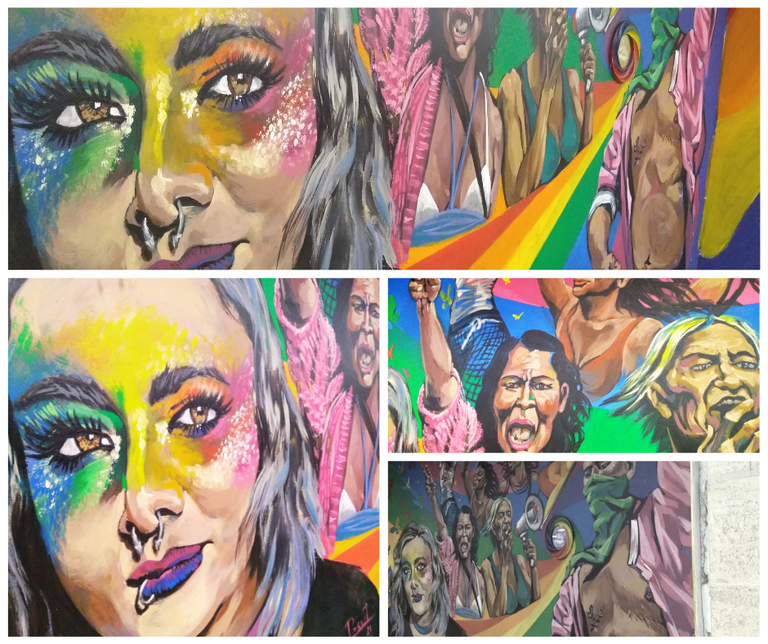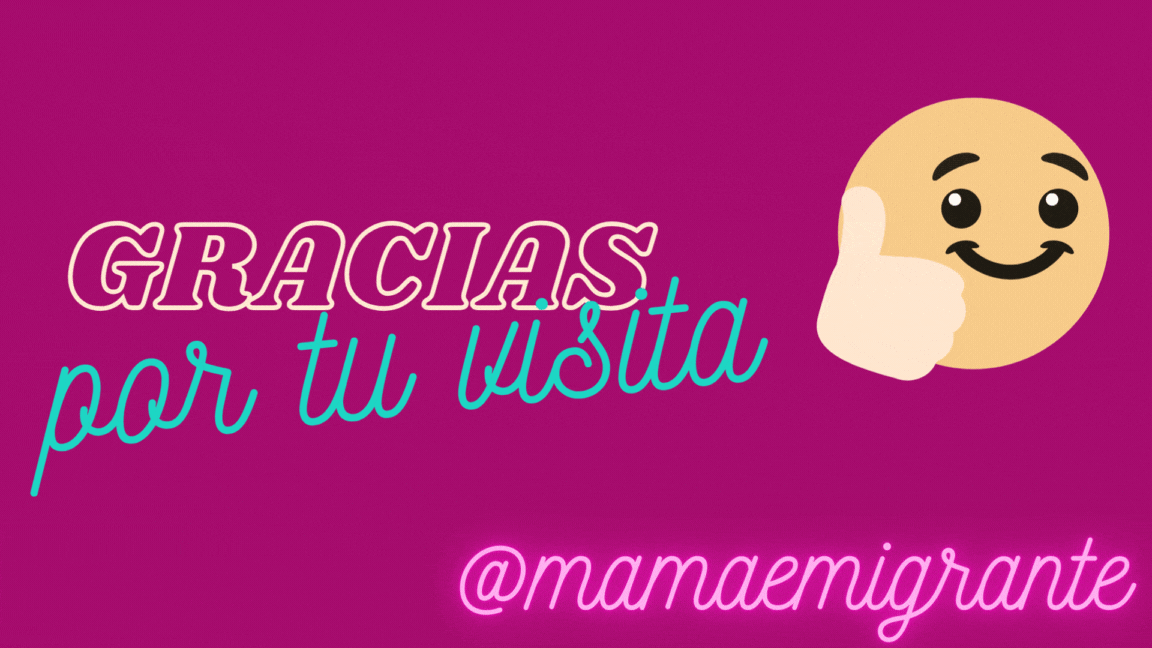
He de confesar que soy muy poco usuaria del servicio de Subte que tiene Buenos Aires, más por permanecer dentro de las áreas cercanas a mi casa, que por otra razón. Sin embargo, cuando debo ir a alguna zona de capital, siempre es mi primera opción al momento de trasladarme.
Haciendo esta publicación, recordé sobre una canción que hiciera una orquesta bailable venezolana, con respecto a la construcción del Metro (así se llama allá) de Caracas, en la que nombraban este proceso como si fuera un implante que le hacían a la ciudad. Y de ser así, el "implante" bonaerense es mucho más grande que el que sufriera la capital de Venezuela.
No manejo estadísticas, pero por la red de Subte pasan muchas personas a diario, de ida y vuelta, y los vagones atestados de gente lo pueden confirmar. Sin embargo, en ese vaivén de gente que embarca y desembarca, me atrevería a asegurar que son muy pocos los que se detienen a mirar el arte, que como testigos silenciosos podemos encontrar en la mayoría de las estaciones.

Justo por este mar de gente, yo no me atrevo a sacar fotos de los hermosos murales hechos con diferentes técnicas, que se pueden encontrar a lo largo de todas las líneas. Sin embargo, pasando por la estación Retiro, en una hora no tan transitada, encontré la oportunidad de hacerlo, y por eso les comparto una pequeña parte de lo que se puede ver.
En esta estación hay una especie de pequeña galería con murales alusivos a la historia y la realidad propia de los habitantes de la ciudad, siendo la figura humana la principal protagonista, manifestando aquello que le aqueja o que representa su día a día.

La que más me llamó la atención fue la llamada "30 mariposas volando" de Andrea Pasut, en principio por ser la más colorida y con imágenes enormes de mujeres de diferentes tipos, pero al final todas unidas por una misma consigna.

Luego de esta, justo del otro lado del andén, la obra de Fernando Allievi denominada "Las primeras luces", nos muestra un retrato triste de lo que representa el trabajo infantil, que aunque está penalizado, no termina de ser erradicado.
Un niño en edad escolar, espera junto a su perro compañero y su caja de utensilios, a que alguien le pida que le lustre sus zapatos. Y aunque ahora eso se estila muy poco, son muchos los niños que desde pequeños deben procurarse el sustento, o ayudar a sus familias con algo de dinero.


Un par de pinturas, del mismo Allievi, nos muestra realidades tangibles, que no son solo argentinas, sino que nos tocan a todos los latinoamericanos de la misma manera.

En una vemos como cada quien vive la vida a su manera, según sus gustos y estratos sociales, y ello no es impedimento para convivir en los mismos espacios.

En la otra, llamada "Las Mascaras" nos muestra que no siempre el otro se nos presenta tal y como es, y que esas falsas personalidades conviven entre nosotros sin que nos demos cuenta.

Por último, los murales cerámicos realizados no solo en las paredes, sino también en las columnas del andén, y en los que podemos distinguir mensajes "ocultos" terminan de completar esta pequeña galería.

Y una realidad que afecta a este país, no de ahora, sino desde hace mucho, la presencia de personas sin techo, que consiguen cobijo en cualquier rincón. Este contraste entre el mensaje y lo que vemos en su cercanía, es un hecho que da mucho para pensar.


I must confess that I am not a frequent user of the Subway service in Buenos Aires, mainly because I stick to areas close to my home rather than any other reason. However, when I need to go to a certain area in the capital, it is always my first choice for transportation.
Making this post, I remembered a song by a Venezuelan dance orchestra regarding the construction of the Metro (that's what it's called there) in Caracas, where they referred to this process as if it were an implant being made to the city. If that is the case, the "implant" in Buenos Aires is much larger than the one in the capital of Venezuela.
I don't have statistics, but many people pass through the Subway network daily, back and forth, and the crowded train cars can confirm that. However, in the hustle and bustle of people boarding and disembarking, I would venture to say that very few actually stop to admire the art, which we, as silent witnesses, can find in most stations.

Because of this sea of people, I do not dare take photos of the beautiful murals created with different techniques that can be found along all the lines. However, passing through Retiro station at a not-so-busy hour, I found the opportunity to do so, and that is why I share with you a small part of what can be seen.
In this station, there is a kind of small gallery with murals alluding to the history and reality of the city's inhabitants, with the human figure being the main protagonist, expressing what afflicts them or representing their daily lives.

The one that caught my attention the most was called "30 butterflies flying" by Andrea Pasut, mainly because it was the most colorful and featured huge images of women of different types, but all united by the same message.

Following this, just on the other side of the platform, the work by Fernando Allievi called "The first lights" shows a sad portrait of what child labor represents, which, although illegal, has not been completely eradicated.
A school-age boy waits with his dog companion and his box of tools for someone to ask him to shine their shoes. And although this is now rare, there are many children who from a young age must provide for themselves, or help their families with some money.


A couple of paintings by Allievi show tangible realities that are not only Argentine but touch all of us Latin Americans in the same way.

In one, we see how everyone lives life in their own way, according to their tastes and social strata, and this is not an impediment to coexist in the same spaces.

In the other, called "The Masks," it shows us that others do not always present themselves to us as they truly are, and these false personalities coexist among us without us realizing.

Finally, the ceramic murals created not only on the walls but also on the platform columns, in which we can distinguish "hidden" messages, complete this small gallery.

And a reality that affects this country, not just now but for a long time, is the presence of homeless people who find shelter in any corner. The contrast between the message and what we see in its vicinity is something that gives a lot to think about.

Foto/Photo by: @mamaemigrante
Edición/Edited by @mamaemigrante using canva
Translated and formatted with Hive Translator by @noakmilo.

From Venezuela, our witness drives decentralization and the adoption of Web3 technology, creating opportunities for the local community and contributing to the global ecosystem. // Desde Venezuela, nuestro testigo impulsa la descentralización y la adopción de la tecnología Web3, generando oportunidades para la comunidad local y contribuyendo al ecosistema global.
Sigue, contacta y se parte del testigo en: // Follow, contact and be part of the witness in:
Gracias por el apoyo!
Gracias por el apoyo...
Me encantan estos recorridos que haces y con los ojos atentos, para mostrarnos realidades, que están a la vista de todos, pero que pocos lo ven.
Genial, presentación, amiga Marluy.
Saludos.
Me encanta este tipo de arte amiga, el que por si solo cuenta una gran historia.
Si, realmente son murales que se pueden interpretar de varias formas, pero que todos entienden de una misma manera,
Si parezco perrito asomado por la ventana del carro, saciando mi curiosidad por ver todo lo lindo que hay en los alrededores.